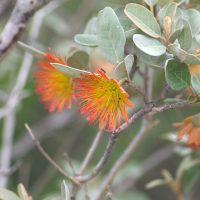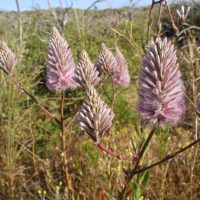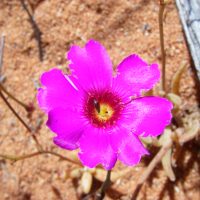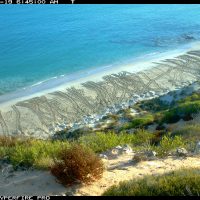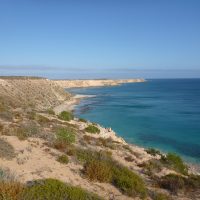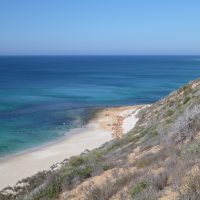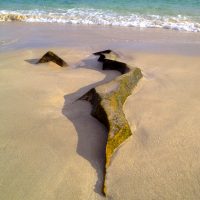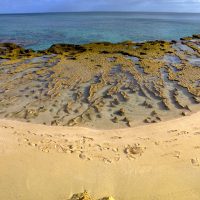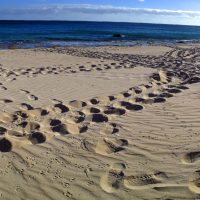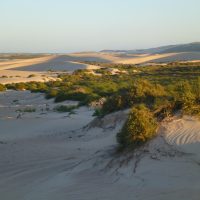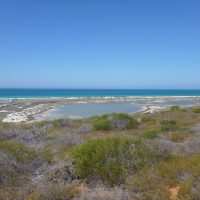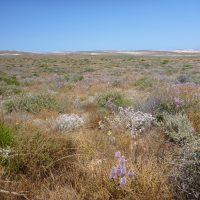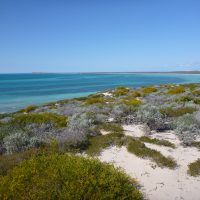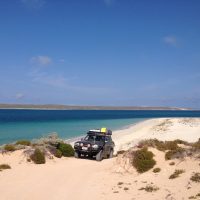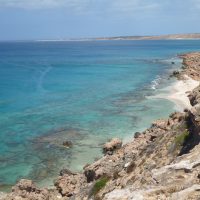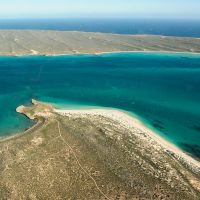Dirk Hartog Island (Wirruwana) National Park
This island can be accessed by 4WD via Steep Point, as well as by boat and plane.
You can help protect the island by downloading and watching the island protection video before you leave home.
Jutting north from the most westerly part of the Australian mainland is Wirruwana or Dirk Hartog Island. The island is of great significance both historically and for a one of the world’s most important conservation projects happening right now in the national park.
In 1616 Dirk Hartog left evidence of the first European landing on Australia’s west coast in the form of a pewter plate inscribed with details of his journey. This was at Cape Inscription, also the site of an historic lighthouse and associated keepers’ quarters. Find out more about Hartog and the explorers that followed in 1697 and 1699 on our maritime history pages.
The island’s history as a pastoral lease ended when it became a national park in 2009, although evidence of this history remains across the island, as do the remnants of a garrison at Quoin Bluff South. The exciting Return to 1616 Ecological Restoration Project is now breathing life back into the island with the eradication of feral animals now complete. The reintroduction of species that became extinct on the island during its pastoral days began in 2018 and further translocations will take place over 12 years. Download the Return to 1616 brochure for more information. When visiting Dirk Hartog Island National Park, you can help protect these animals by downloading and reading the island protection brochure before leaving home.
The western side of the island is dominated by tall, exposed cliffs while protected beaches and shallow bays comprise the eastern coastline. The low shrubby vegetation harbours a range of animal life including the Dirk Hartog Island black and white fairy-wren, which is found nowhere else, and the sandhill frog whose distribution is limited.
Seabirds abound along the protected eastern coast of Dirk Hartog Island with species nesting on islands close to shore. Wildlife in the waters close to the island can be observed from a boat or while snorkelling or diving – manta rays throughout the year, whale sharks around the northern coastline in May and June and humpback whales in September. Dugongs travel to warmer waters around the island when the rest of Shark Bay’s waters are at their coldest.
Each summer thousands of loggerhead turtles return to Turtle Bay, the area they emerged as hatchlings, to lay their eggs. Parks and Wildlife staff and volunteers have been monitoring this during annual surveys each January since 1994 and Turtle Bay is one of the most important loggerhead nesting areas in the southern hemisphere.
Access & Safety
Dirk Hartog Island can only be accessed by private boat, a commercial barge service from Steep Point, or light aircraft charter.
A high clearance four-wheel-drive vehicle is required to drive on the island and only 20 private vehicles are permitted at any one time. The island’s single lane four-wheel drive tracks are mostly soft sand but are rocky in places.
If boating to the island, travel from Denham is about 35km as the crow flies. Strong southerly winds in summer may prevent the journey. Check local conditions and ensure you have all necessary safety equipment before crossing. If camping, bookings must be made prior to your departure.
When visiting the island please make sure you don’t bring any unwanted pests with you. Check your gear and vehicle for hitchhikers like geckos, rats and seeds. See the island protection page for more about keeping our islands free of unwanted pests.
This area is remote and inherent dangers include variable weather conditions — especially in summer when the park is hot, dry and windy — and a hazardous coastline with large surf and 200 metre high cliffs on the western side.
Shifting sand dunes are among the challenging four-wheel drive conditions. For your safety:
- Notify a reliable person of your trip plans so that you can be traced in an emergency.
- Be prepared for the heat. Take at least 10 litres of water for each person per day.
- Exercise extreme caution near cliff edges especially when fishing.
- Supervise children at all times.
See the travel advice pages for more information about safety and the activities that interest you.
There are designated campsites at The Block, Urchin Point, Quoin Head, Dampier’s Landing, Withnell Point, Sandy Point, and Louisa Bay. These camp sites are managed by the Parks and Wildlife Service and fees apply. For details and availability go to Dirk Hartog Island Lodge.
To help protect the unique wildlife on Dirk Hartog Island National Park, download and read the Island Protection brochure before you leave home for tips on how to prepare for your trip. Campfires are not permitted on Dirk Hartog Island and there are no facilities, services or supplies so you need to be entirely self-sufficient. Please take all of your rubbish off the island with you.


